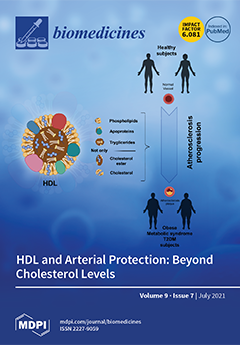Glucose-dependent insulinotropic polypeptide (GIP) has been reported to have an atheroprotective property in animal models. However, the effect of GIP on macrophage foam cell formation, a crucial step of atherosclerosis, remains largely unknown. We investigated the effects of GIP on foam cell formation of, and
CD36 expression in, macrophages extracted from GIP receptor-deficient (
Gipr−/−) and
Gipr+/+ mice and cultured human U937 macrophages by using an agonist for GIP receptor, [D-Ala
2]GIP(1–42). Foam cell formation evaluated by esterification of free cholesterol to cholesteryl ester and
CD36 gene expression in macrophages isolated from
Gipr+/+ mice infused subcutaneously with [D-Ala
2]GIP(1–42) were significantly suppressed compared with vehicle-treated mice, while these beneficial effects were not observed in macrophages isolated from
Gipr−/− mice infused with [D-Ala
2]GIP(1–42). When macrophages were isolated from
Gipr+/+ and
Gipr−/− mice, and then exposed to [D-Ala
2]GIP(1–42), similar results were obtained. [D-Ala
2]GIP(1–42) attenuated ox-LDL uptake of, and
CD36 gene expression in, human U937 macrophages as well. Gene expression level of cyclin-dependent kinase 5 (
Cdk5) was also suppressed by [D-Ala
2]GIP(1–42) in U937 cells, which was corelated with that of
CD36. A selective inhibitor of Cdk5, (
R)-DRF053 mimicked the effects of [D-Ala
2]GIP(1–42) in U937 cells. The present study suggests that GIP could inhibit foam cell formation of macrophages by suppressing the Cdk5-CD36 pathway via GIP receptor.
Full article






